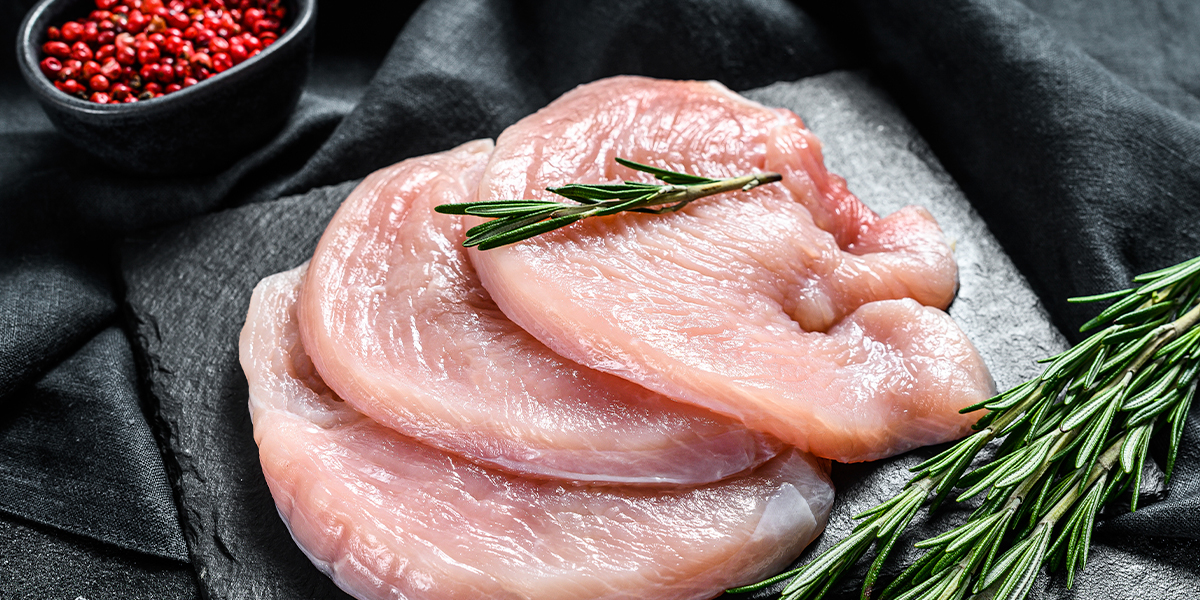Water accounts for approximately 75% of the meat weight in birds. Therefore, the ability to retain water in their muscles is very important to maintaining good meat quality and a very serious concern in the poultry industry. High drip losses can also negatively impact meat appearance, texture and nutritional value, resulting in an economic cost to meat processors and retailers. Drip loss and a reduction in the water-holding capacity of birds are direct consequences of oxidative stress.
Drip loss and cooking loss in poultry meat are problems that impact all the different stages of the food supply chain from the producer to the processing facility, even in the supermarket and at home with the consumer. Drip loss is the act of water escaping from raw poultry meat during storage. Cooking loss refers to water escaping from the meat as it is cooked.
Excessive muscle water loss can be a problem for several reasons, including:
- For the customer, fresh poultry meat products with high drip loss had a diminished visual appeal and inferior palatability traits related to juiciness and tenderness due to excess purge in packages.
- Poor meat and protein quality, leading to unsatisfied consumers
- Shorter shelf life at the supermarket, leading to more waste
- Less saleable weight from raw and pre-cooked meat for producers and processors
- Increased food-safety risks, since fluid can harbor the development of harmful bacteria.
These factors can lead to lower profits for those selling products like nuggets, patties or other frozen poultry items.
Larger water losses are usually linked to a lower level of protein quality because the ability of the meat to hold water is affected by the state of the muscle proteins. There are many factors at each stage of the production process that can influence protein quality. One of them is oxidative stress. During times of stress, which could be related to a reduction of feed intake, heat stress, stocking density, etc., birds will produce free radicals, which triggers oxidative stress. Other factors producing oxidative stress could be: fat sources, infections, vaccine reactions, mycotoxins, high altitude and others. This can cause damage to the protein cell membranes affecting protein quality and functionality not only when the animal is alive, but also during the postmortem period. This damage could allow water to escape from the meat during processing, during storage and during cooking. You can combat this by reducing oxidative stress and neutralizing free radicals by supplementing your poultry nutrition program with antioxidants, primarily selenium and vitamin E.
The Antioxidant Effects of Selenium and Vitamin E
Birds, just like humans and other animals, naturally generate substances like free radicals. A balance between free radicals and antioxidants is necessary for proper physiological function. If free radicals overwhelm the body’s ability to regulate them, oxidative stress ensues. The animal protects itself by activating several lines of antioxidant defense system, which relies on trace minerals to work properly. During these times, it’s important for birds to have stores of selenium to draw from to scavenge and neutralize the free radicals and reduce oxidative stress.
This emphasizes the importance of providing the correct source of trace minerals in the diet. This is especially the case of zinc and selenium, key minerals for antioxidant response not only during grow out but also for keeping meat quality during storage.
A recent research study demonstrated heat-stressed birds fed zinc from Availa® Zn had greater intestinal health and lower oxidative stress, translating into improved breast meat yield and lower drip loss.
Read More: Selenium Reduces Oxidative Stress in Livestock and Poultry
Vitamin E is also critical as an antioxidant, but in a different way. It is a chain-breaking, fat soluble antioxidant that inhibits the production and propagation of free radicals when fat undergoes oxidation.
By utilizing both selenium and vitamin E appropriately, you will see a synergistic effect that can manage oxidative stress and improve meat quality in poultry meat.
Build Selenium Stores; Improve Meat Yield and Quality
It is important for birds to have stores of selenium built up to neutralize free radicals during high-stress periods. To achieve this, you should consider providing the best source of selenium with the highest bioavailability. Selenium from Availa® Se is absorbed with high efficiency, resulting in greater selenium body stores to support antioxidant defenses and allow it to continue to act as an antioxidant, even after the bird has gone to the processing facility.
A study conducted at a turkey facility in Italy evaluated the effects of using Availa Se and vitamin E to increase meat quality and yield. Overall, combining Availa Se with vitamin E supplementation rate resulted in:
- A 106% increase in selenium content in fresh turkey breast
- A reduction in drip loss
- A reduction in cooking loss
- Increases in meat quality and yield
Based on the results we saw in this study, we have determined that fresh-meat producers and cooked-meat producers alike will experience a healthy return on investment for using Availa Se.
Reduce Drip Loss To Boost Profits
By reducing oxidative stress in live birds, drip loss and cooking loss can be impacted and may result in better meat quality, more meat to sell to meet consumer expectations and higher potential profits for the entire food chain.
Contact your Zinpro representative today to discuss how to formulate your poultry nutrition program with Availa Se.

